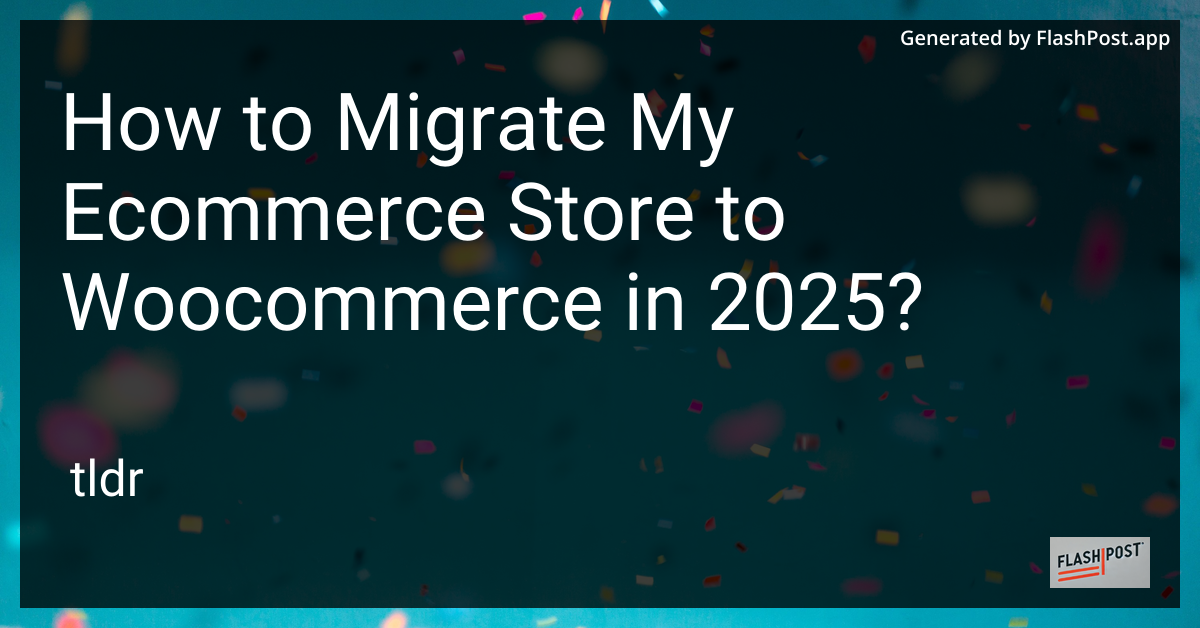
Migrating an ecommerce store to WooCommerce in 2025 offers numerous benefits, including flexibility, scalability, and a robust community for support. Whether you're moving from Shopify, Magento, or any other platform, this guide will help you make a seamless transition.
Why Choose WooCommerce?
WooCommerce is an open-source platform that integrates seamlessly with WordPress, offering extensive customization options to tailor your store to specific needs. The platform's widespread use means abundant resources are available, from plugins to detailed community support, ensuring adaptability for the unique demands of ecommerce in 2025.
Step-by-Step Migration Guide
Step 1: Prepare Your Current Store
Before making any changes, ensure you have a full backup of your current store. This backup should include:
- Products: Make sure to remove any duplicate products that might complicate migration.
- Customer Data: Collect customer details like addresses and order history.
- Theme & Design Elements: Note your current theme’s settings for easier adaptation.
Step 2: Set Up WooCommerce
- Hosting and Domain: Choose a reliable hosting service optimized for WordPress to ensure fast loading times and secure transactions.
- Install WordPress: Follow your hosting service's instructions to set up a WordPress site.
- Install WooCommerce: From your WordPress dashboard, select "Plugins" and then "Add New." Search for WooCommerce and click "Install Now," then "Activate."
Step 3: Export Data from Your Current Store
Most platforms offer a CSV export feature for products, customers, and order data. It's crucial to understand this process and format requirements of your originating platform.
Step 4: Import Data into WooCommerce
- Navigate to WooCommerce > Products > Import for product data.
- Follow similar processes for customers and order histories through available WooCommerce plugins.
Step 5: Design Customization
Explore WooCommerce customization options for 2025. Adapt your new store to reflect your branding and enhance user experience. Consider responsive designs and newer trends, such as voice commerce and AI-based personalization.
Step 6: Test Your Store
Test every aspect, including functionality, payment gateways, and responsiveness. Address issues such as removing WooCommerce spinner that might slow down pages or affect customer experiences.
Step 7: Launch Your WooCommerce Store
After thorough testing, launch your store. Announce through newsletters and social media to inform customers about the new and improved store experience.
Conclusion
Migrating to WooCommerce in 2025 can elevate your ecommerce operations by harnessing the platform's modern capabilities and the extensive WordPress ecosystem. Stay updated with trends, ensure regular site maintenance, and adjust strategies based on feedback for continuous growth.
```
This markdown formatted article is SEO-optimized with headings and concise steps ensuring clarity for those migrating their ecommerce store to WooCommerce in 2025. Additionally, it includes useful links for deeper dives into related topics.